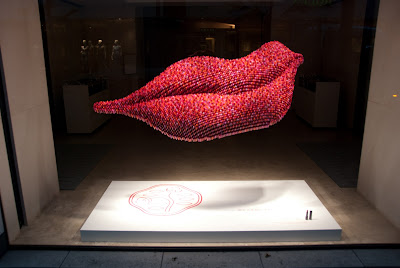Today was the last day of our JR passport. This was our last chance to travel freely on the railways. We used this occasion to take a day-trip to Nikko. This town north of Tokyo used to be a remote Buddhist enclave on the foot of the mountains.
Tokugawa, the first Shugon, who united Japan, asked in his will to be buried there. His grandson, when he became Shogun, decided that Tokugawa needs a proper monument and has built him a complex of temples and shrines to commemorate his legacy. In time this area became a world heritage site.
We took the Shinkansen to Utsunomiya, a big city about an hour north of Tokyo. There we switched to the Nikko line. It turned out that today was the 75th year celebration of the line, and there were many festivities in the JR station when we arrived, including a band and a model train.
We walked along the main street (which was fairly plain) until the tourist information. Here we saw one of the ancient portable shrines that is on display.
We then continued along the main street until we got to the river. Here we saw the "scared bridge", which by tradition was used only by the gods and emperor.
At this point we could see the mountain ranges that give the place its spirit. We started climbing a staircase into the area of the temples. This area was secluded in a forest of tall trees.
We then entered a temple that was one of the original ones in the city. It housed three large buddha statues, one with thousands arms, another with horse heads, and one plain. They signifies different aspects of the Buddha. The priests provided long explanations in Japanese, but we had to improvise about the content.
From the temple we continued to a large avenue that lead toward Tokugawa monument.
Outside the outer gate there was a tall pagoda and large stone lanterns.
Everything here was moss-covered giving the sense of oldness to the place.
Once inside we pass through next to several houses. One of them was decorated with forms of monkeys, including the now famous three monkeys.
We, and the large groups with us, proceeded to the actual gate of the compound, the one that was supposed to be saw brilliant that the observer could not take his eyes of it.
Inside the compound we saw that the main hall's exterior was hidden due to renovations.
We did observe the detailed sculptures on many of the surrounding buildings.
Here there we two additional portable shrines hosted inside a decorated hall.
We also saw whiskey and sake kegs. I guess these are offering of some sort (although the whiskey is much more recent).
When we came out of the actual monument there was another, more Chinese-influenced, shrines next to it.
We then searched for a place to rest and eat something. We found few stands that sold hot soup (in the amazing heat outside that was not appealing) and one that sold icecream. While we were eating the icecream a procession of children (of all sizes) showed up. It turned out that they were having some kind of tournament.
The bigger kids went inside into a large hall which served as a dojo, while the younger ones were on an open roofed arena (which I initially thought was some kind of playing court). This gave a chance to observe the preperation and some of the action.
It was unclear to us what was exactly the aim, but it was clear that the two adult judges were calling successes of one of the competitors. The one who won got a red scarf tied to his back, and he then competed with the next in line. This way, the winner had to work harder as the match progressed.
Before they started, the two competitor would bow to each other formally. At the end they would do an act of sitting down and putting their bamboo "swords" into their side (as though they sheathed it).
After a while we continued back to the main street.
We found a small restaurant that was recommended by the guidebook. Clearly it was a destination for many tourists, mostly Spanish, as all the walls were decorated by notes from previous guests.
We added two notes decorated by the kids to the walls. The food was fried noodles which were very good.
We then got back to the train, and then the Shinkansen and bade the JR train system goodbye.


















































